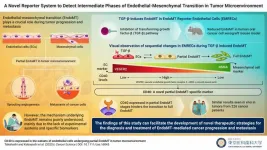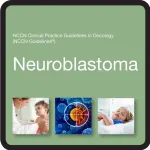(Press-News.org) In a recent study of the brain’s waste drainage system, researchers from Washington University in St. Louis, collaborating with investigators at the National Institute of Neurological Disorders and Stroke (NINDS), a part of the National Institute of Health (NIH), discovered a direct connection between the brain and its tough protective covering, the dura mater. These links may allow waste fluid to leave the brain while also exposing the brain to immune cells and other signals coming from the dura. This challenges the conventional wisdom which has suggested that the brain is cut off from its surroundings by a series of protective barriers, keeping it safe from dangerous chemicals and toxins lurking in the environment.
“Waste fluid moves from the brain into the body much like how sewage leaves our homes,” said NINDS’s Daniel S. Reich, M.D., Ph.D. “In this study, we asked the question of what happens once the ‘drain pipes’ leave the ‘house’—in this case, the brain—and connect up with the city sewer system within the body.” Reich’s group worked jointly with the lab of Jonathan Kipnis, Ph.D., a professor at Washington University in St. Louis.
Reich’s lab used high-resolution magnetic resonance imaging (MRI) to observe the connection between the brain and body’s lymphatic systems in humans. Meanwhile Kipnis’s group was independently using live-cell and other microscopic brain imaging techniques to study these systems in mice.
Using MRI, the researchers scanned the brains of a group of healthy volunteers who had received injections of gadobutrol, a magnetic dye used to visualize disruptions in the blood brain barrier or other kinds of blood vessel damage. Large veins are known to pass through the arachnoid barrier carrying blood away from the brain, and these were clearly observed on the MRI scans. As the scan progressed, a ring of dye appeared around those large veins that slowly spread out over time, suggesting that fluid could make its way through the space around those large veins where they pass through the arachnoid barrier on their way into the dura.
Kipnis’s lab was making similar observations in mice. His group injected mice with light-emitting molecules. Like with the MRI experiments, fluid containing these light-emitting molecules was seen to slip through the arachnoid barrier where blood vessels passed through.
Together, the labs found a “cuff” of cells that surround blood vessels as they pass through the arachnoid space. These areas, which they called arachnoid cuff exit (ACE) points, appear to act as areas where fluid, molecules, and even some cells can pass from the brain into the dura and vice versa, without allowing complete mixing of the two fluids. In some disorders like Alzheimer’s disease, impaired waste clearance can cause disease-causing proteins to build up. Continuing the sewer analogy, Kipnis explained the possible connection to ACE points:
“If your sink is clogged, you can remove water from the sink or fix the faucet, but ultimately you need to fix the drain,” he said. “In the brain, clogs at ACE points may prevent waste from leaving. If we can find a way to clean these clogs, its possible we can protect the brain.”
One implication of ACE points is that they are areas where the immune system can be exposed to and react to changes occurring in the brain. When mice in Dr. Kipnis’s lab were induced to have a disorder where the immune system attacks the myelin in their brain and spinal cord, immune cells could be seen around ACE points and even between the blood vessel wall and the cuff cells; this led over time to a breakdown of the ACE point itself. When the ability of immune cells to interact directly with ACE points was blocked, the severity of infection was reduced.
“The immune system uses molecules to communicate that cross from the brain into the dura mater,” said Kipnis. “This crossing needs to be tightly regulated, otherwise detrimental effects on brain function can occur.”
Reich and his team also observed an interesting connection between the participants’ age and the leakiness of ACE points. In older participants, more dye leaked into the surrounding fluid and space around the blood vessels.
“This might point to a slow breakdown of the ACE points over the course of aging,” said Reich, “and this could be consequential in that the brain and immune system can now interact in ways that they’re not supposed to.”
The connection to aging and the disruption of a barrier separating the brain and immune system fits with what has been observed in aging mice and in autoimmune disorders like multiple sclerosis. This newfound link between the brain and immune system could also help explain why our risk for developing neurodegenerative diseases increases as we get older, but more research is needed to confirm this connection.
This study was supported by the NINDS Intramural Research Program, the National Institute on Aging (AG034113, AG057496, AG078106), and the Cure Alzheimer’s Fund BEE Consortium.
Article:
Smyth, LCD, et al. “Identification of direct connections between the dura and the brain.” Nature. February 7, 2024. DOI: 10.1038/s41586-023-06993-7
###
NINDS (http://www.ninds.nih.gov) is the nation’s leading funder of research on the brain and nervous system. The mission of NINDS is to seek fundamental knowledge about the brain and nervous system and to use that knowledge to reduce the burden of neurological disease.
About the National Institute on Aging (NIA): NIA leads the U.S. federal government effort to conduct and support research on aging and the health and well-being of older people. Learn more about age-related cognitive change and neurodegenerative diseases via NIA’s Alzheimer's and related Dementias Education and Referral (ADEAR) Center website. Visit the main NIA website for information about a range of aging topics, in English and Spanish, and stay connected.
About the National Institutes of Health (NIH): NIH, the nation's medical research agency, includes 27 Institutes and Centers and is a component of the U.S. Department of Health and Human Services. NIH is the primary federal agency conducting and supporting basic, clinical, and translational medical research, and is investigating the causes, treatments, and cures for both common and rare diseases. For more information about NIH and its programs, visit http://www.nih.gov.
END
Chronic stress has far-reaching consequences for our bodies. For example, many stress-related psychiatric illnesses such as depression are associated with changes in the immune system. However, the underlying mechanisms of how these changes affect the brain are still largely unknown.
Enzyme from immune cells in the blood affects nerves in the brain
An international research team led by the University of Zurich (UZH), and the University Hospital of Psychiatry Zurich (PUK) and the Icahn School of Medicine at Mount Sinai, New York, has now uncovered a novel mechanism. “We were able to show that ...
Hidden beneath the heavily cratered surface of Mimas, one of Saturn's smallest moons, lies a secret: a global ocean of liquid water. This astonishing discovery, led by Dr. Valéry Lainey of the Observatoire de Paris-PSL and published in the journal Nature, reveals a "young" ocean formed just 5 to 15 million years ago, making Mimas a prime target for studying the origins of life in our Solar System.
“Mimas is a small moon, only about 400 kilometers in diameter, and its heavily cratered surface gave no hint of the hidden ocean beneath," says Dr Nick Cooper, ...
An international research group has discovered a new state of matter characterized by the existence of a quantum phenomenon called chiral current. These currents are generated on an atomic scale by a cooperative movement of electrons, unlike conventional magnetic materials whose properties originate from the quantum characteristic of an electron known as spin and their ordering in the crystal.
Chirality is a property of extreme importance in science, for example, it is fundamental also to understand DNA. ...
In a new study, Tokyo Medical and Dental University researchers shed light on partial endothelial-to-mesenchymal transition in the tumor microenvironment
Tokyo, Japan - Endothelial-mesenchymal transition (EndoMT, also termed as EndMT), a biological process resulting in the formation of mesenchymal (or lineage-committed) phenotypes from endothelial cells (lining blood vessels), plays a crucial role in tumor progression. Despite the important role of EndoMT, the underlying mechanism and characteristics of cells in intermediate/partial EndoMT remain largely unexplored. Now, researchers from Japan have developed a system to study these EndoMT stages.
In ...
COLUMBUS, Ohio – After serving decades in prison, Rwandans convicted of crimes of genocide returned to their communities articulating a “narrative of redemption,” saying they were good people, despite their past crimes.
And they were hopeful about their prospects for reintegrating into their communities.
Many of these former prisoners had been convicted of murder, often of their own neighbors, connected to the 1994 genocide in Rwanda. But they said they had changed – even while minimizing their role in the killings.
In ...
Fukuoka, Japan—Researchers at Kyushu University have found that Japan's current policy of stopping the sale of gas vehicles by 2035 and transitioning only to hybrids and electric vehicles may be insufficient to reduce the country's CO2 emissions and prevent it from reaching its decarbonization target goals. In fact, emissions may temporarily increase.
The team's analysis showed that along with the policy, the Japanese government must simultaneously work to increase production of clean ...
The European project entitled “Bone, Brain, Breast and Axillary Medical Microwave Imaging Twinning (3BAtwin)” has been awarded with €1.5M to reinforce our training on Medical Microwave Imaging (MMWI). The project is led by the Faculty of Sciences of the University of Lisbon (Ciências ULisboa) (Portugal), in collaboration with University of Galway (Ireland) and Turin Polytechnic University (Italy).
The goal of this twinning project is to accelerate the transition of Medical Microwave Imaging “from the research bench ...
PLYMOUTH MEETING, PA [February 7, 2024] — The National Comprehensive Cancer Network® (NCCN®)—an alliance of leading cancer centers—today published its first ever set of treatment recommendations pertaining to neuroblastoma. Neuroblastoma is a type of solid tumor cancer that typically occurs in early childhood, with the majority diagnosed before age five.[1] Neuroblastoma is the most common type of solid tumor (outside of brain tumors) in children, with more than 700 cases diagnosed in the United States every year.[2] Research innovations ...
Highlights:
Alterations in gut microbiota may influence immune system changes during pregnancy.
However, the connection isn’t well known.
Researchers in China analyzed gut microbiota, metabolites and cytokines in healthy pregnant and non-pregnant young women.
The new study identifies numerous pathways by which the gut microbiome may change the immune system.
Washington, D.C.—During pregnancy, a woman’s immune system changes dramatically but researchers don’t yet understand all the underlying mechanisms. A new study shows how the gut microbiota may play a role.
In a paper published this week in mSystems, researchers in China report that during pregnancy, ...
Highlights:
Wastewater, even when treated, can deliver antimicrobial resistance genes to rivers.
Further research is needed on if rivers function as a protective barrier.
Researchers subjected biofilms from pristine rivers to wastewater.
Antibiotic resistant bacteria from wastewater successfully integrated at first, but in the warmest water were edged out by naturally occurring microbes.
The study suggests that temperature can influence the microbial competition in rivers.
Washington, D.C.—Antimicrobial resistant genes (ARGs) from wastewater can end up in natural biofilms in rivers, but they may not stick around very long. This week in mSphere, ...



